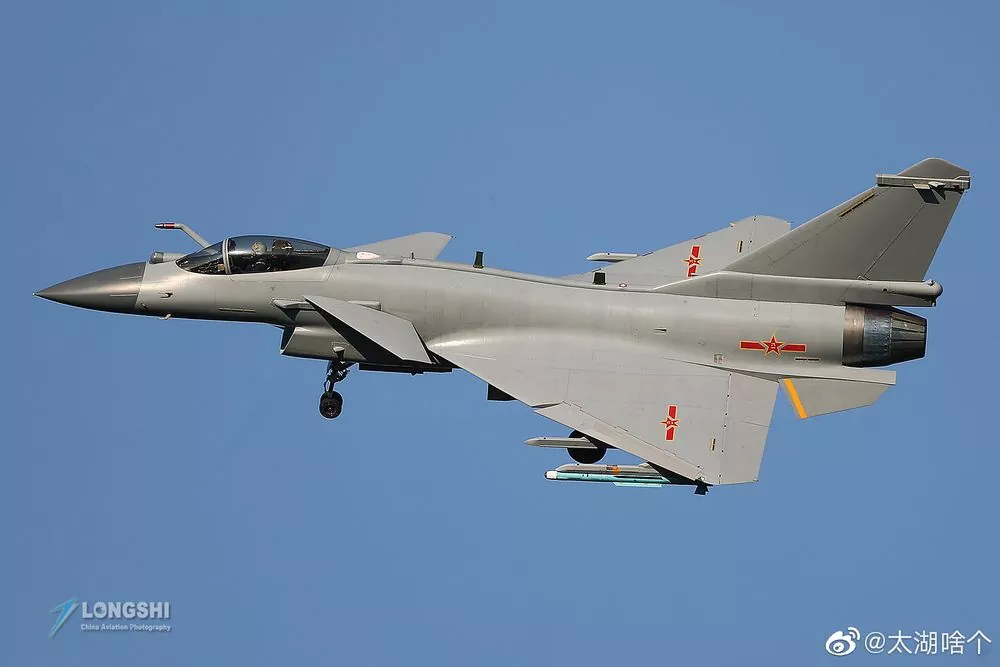The Chengdu J-10 is the indigenously developed Chinese state-of-the-art multi-role tactical fighter aircraft independently developed by the Chengdu Aircraft Corporation (CAC) of China. It is the first true fourth-generation Chinese aircraft that matches the Western fighter jets in terms of performance and capabilities.
Follow us on Google News to get the latest defense news and analysis
The Chengdu Aircraft Corporation (CAC) which developed the J-10 fighter jet is also responsible for the joint development of the JF-17 Thunder fighter aircraft with the partnership of Pakistan Aeronautical Complex (PAC) for Pakistan Air Force (PAF).
The Chinese J-10 fighter jet is known as ‘Meng Long’ or ‘Vigorous Dragon’ in China and ‘Firebird’ by NATO.
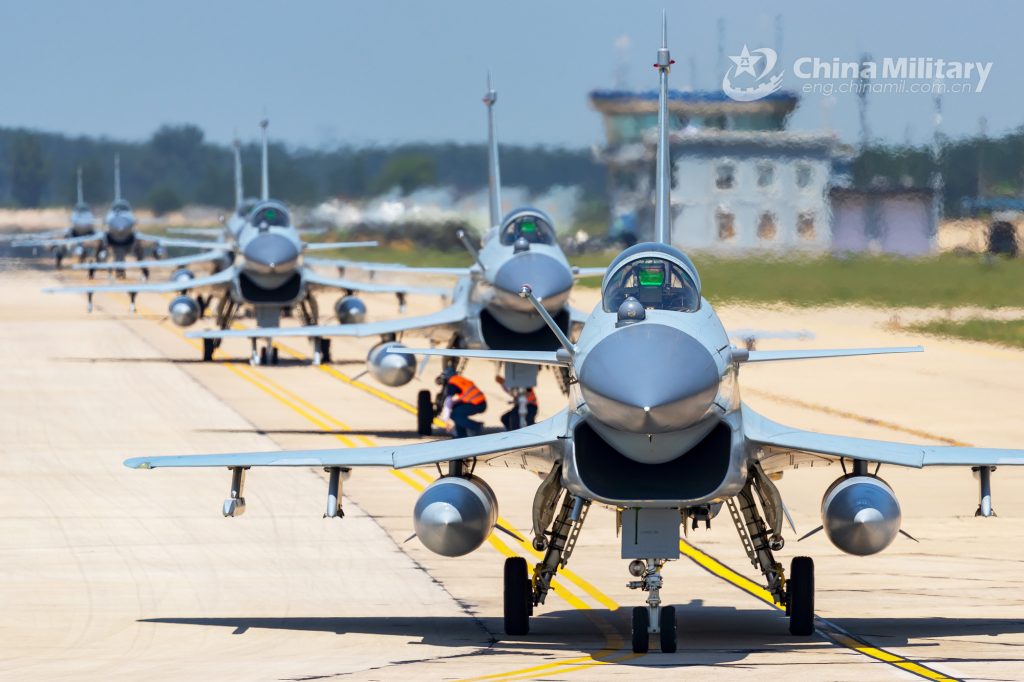
Characteristics of the Chengdu J-10 Fighter:
The J-10 is a single-engine, medium-weight, multi-role tactical combat fighter aircraft capable of performing in all-weather conditions. The fighter jet is configured with a delta-wings and canard design having fly-by-wire digital flight control system.
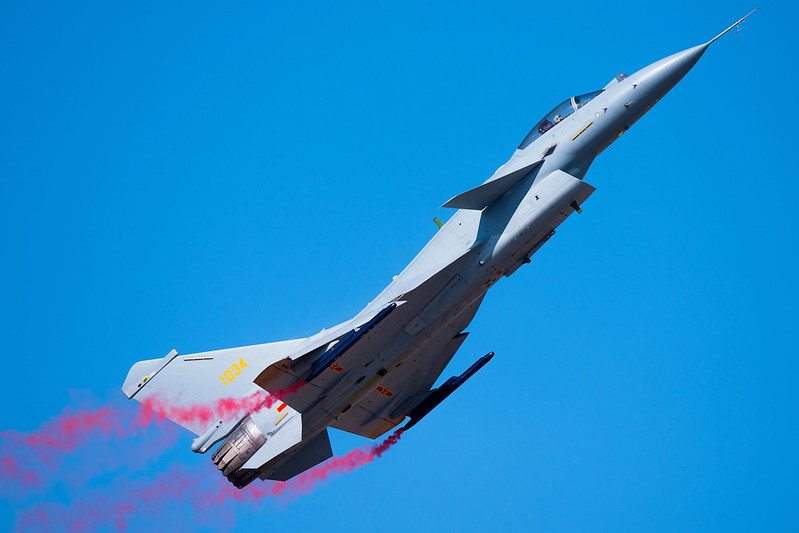
Development History of the Chinese J-10 Fighter Jet:
The project began in the mid 1980s while the aircraft’s initial development began in October 1988. The basic aim to develop this new aircraft from scratch is to gain air superiority and to use this platform in air-to-air combat roles.
As this was the Chinese next-generation aircraft program, so the whole development project was kept under high secrecy. It is worth mentioning, the first photo of the aircraft came-out only 3-4 years after the first flight.
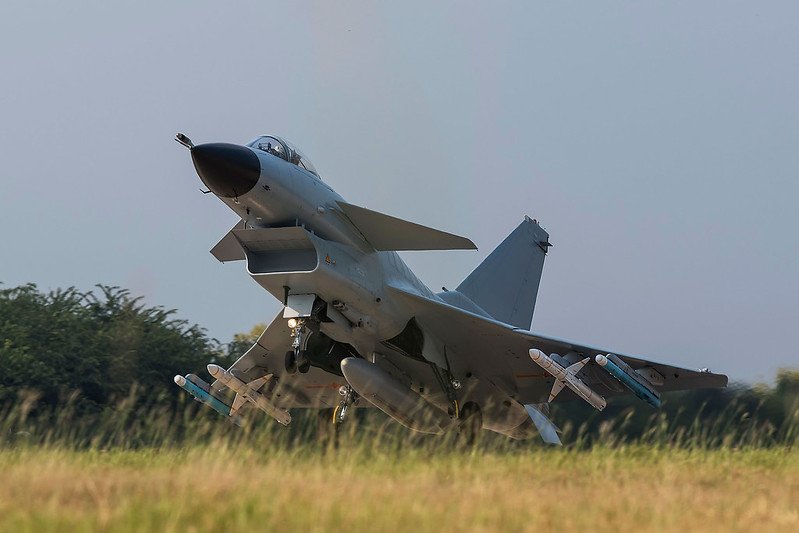
According to the Military-Today, the J-10 was intended to counter the threat posed by the Soviet fourth-generation fighters such as MiG-29 and Su-27.
There are many other speculations that the J-10 aircraft’s design was based on the Lavi – the unsuccessful attempt by Israel to develop an indigenous F-16 fighter. Reported by Global Security.
The J-10 made its maiden flight in 1998. The two-seater variant of the aircraft was also developed, which took its first flight in 2003.
According to Global Security, the Chinese continue to develop and improve the J-10 thus it becomes clear that they are interested in expanding its air-to-surface strike capabilities.
The J-10 fighter jet entered service with PLAAF in 2005. China formally announced the J-10 in February 2007.
The two-seat variant of the fighter jet was also developed for training and air-to-surface roles. The plane took its first successful flight in 2003.
Design and Production of Chengdu J-10 Aircraft:
The J-10 was designed and developed by the Chengdu Aircraft Design Institute (CADI), a subsidiary of Chengdu Aircraft Corporation.
The structure of the aircraft is based on a tail-less canard delta wing configuration. The J-10 has a sweptback vertical tail. A large delta wing is mid-mounted towards the rear of the fuselage.
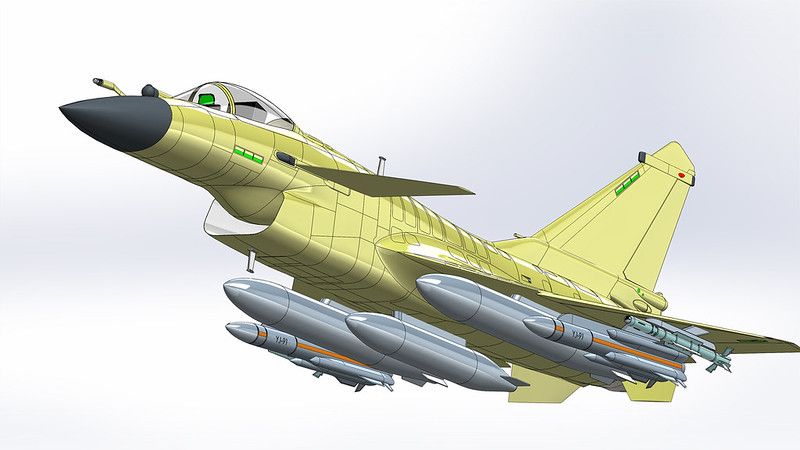
A pair of canards or foreplanes on the forward fuselage behind and below the cockpit which provides very high agility especially at low speeds. There are two fixed outwardly canted ventral fins near the tail.
The airframe of the J-10 aircraft is constructed from metal alloys and composite materials which provides high strength, low weight, and some stealth capabilities to the fighter jet.
The design of the J-10 fighter aircraft is very similar to that of the Israeli Lavi fighter jet, which itself is similar to and derived from the USA’s F-16 aircraft. It is the first Chinese aircraft to make major use of computer-aided design (CAD) for its structural design and development.
The early version of the J-10, such as J-10A, has a rectangular air intake ramp and a splitter plate located under the fuselage, providing the air supply to the engine. The newer version of the fighter aircraft including J-10B and J-10C use a diverterless intake that does not require a splitter plate and also reduce radar cross signature.
Chengdu J-10 Cockpit:
The cockpit of the aircraft is covered by a two-piece bubble canopy providing 360 degrees of visual coverage for the pilot.
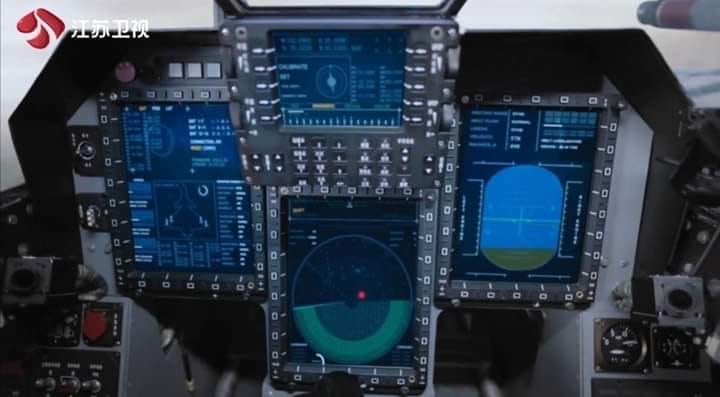
Cockpit displays include a helmet mounted weapon sight (HMD), and a wide field of view head-up display. The J-10 has one full color main display along with two monochrome liquid crystal multifunctional displays.
Collectively the J-10 has a three liquid crystal (LCD) multi-function displays (MFD) along with a indigenously developed holographic head-up display (HUD), similar to the one used in the J-20 5th-generation stealth aircraft. These are fully compatible with the domestically produced advanced helmet mounted sight (HMS). Chinese claim that the locally developed HMS is superior to the one used in Su-27 sold to them by Russia.
Due to the J-10’s aerodynamically unstable design and high maneuvering capability, a digital quadruplex-redundant fly-by-wire (FBW) flight control system (FCS) helps the pilot in flying the aircraft.
The aircraft also incorporates “hands on throttle and stick” (HOTAS) controls.
Avionics and Sensors suit:
The initial variant of J-10 aircraft could carry external pods including the BM/KG300G self-protection jamming pod, Type Hongguand-I infrared search and track pod, KZ900 electronic reconnaissance pod, Blue Sky navigation /attack pod and the Forward-looking Infrared Laser Attack Targeting (FILAT) pod.
The more advanced J-10B integrated with a forward-looking infrared search and track (IRST) with an added laser-range finder pod. It also incorporates a much more capable electronic warfare and countermeasures (EW/ECM) suite.
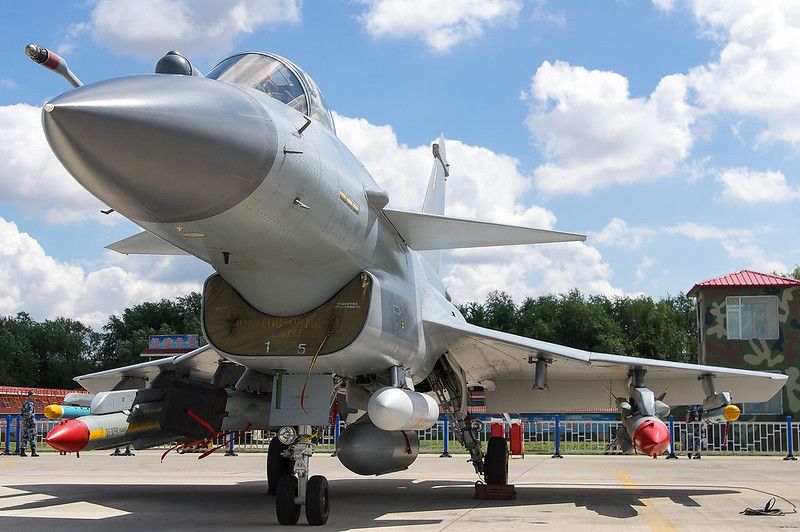
The latest version of the aircraft, the J-10C fitted with an advanced IRST pod, and missile approach warning system used in the J-11, J-16 electronic warfare aircraft, and the 5th-generation J-20 fighter jet.
The avionics of the J-10 served by a 1553B databus architecture.
Chengdu J-10 Radar:
The early versions of the aircraft carry multi-mode pulse-doper fire control radar indigenously designed and developed in China. According to the media sources, the radar has a maximum detection range of 100 km. It can track upto 10 targets and engage 4 of them simultaneously.
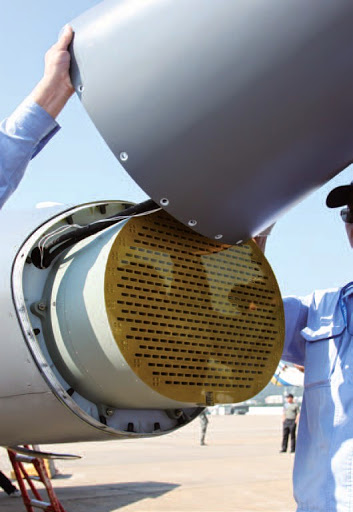
The new variants of J-10 including the J-10B and C equipped with the advanced active electronically scanned array (AESA) radar. The radar is indigenously developed by the 607 Research Institute of China.
Chengdu J-10 Engine:
The initial variants of the aircraft are powered by the Russian Lyulka-Saturn single AL-31 FN turbo-fan engine. It can produce a maximum thrust of 123 kN.
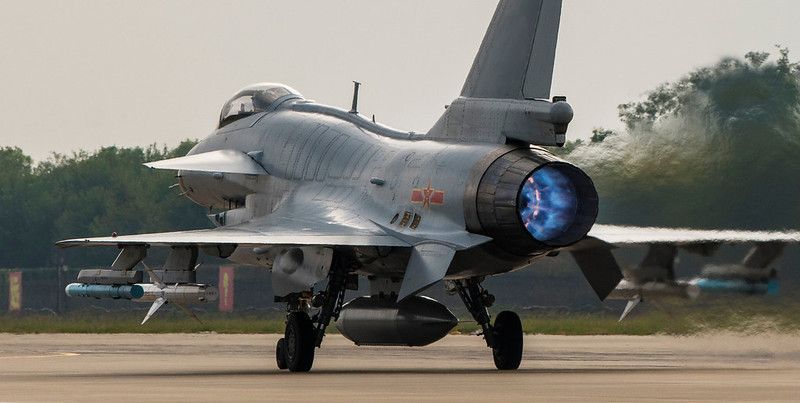
The later versions of the J-10 are powered by the more powerful Russian AL-31 FN M1 engine by Salyut. The new engine provides the maximum thrust of 132.5 kN and is equipped with full authority digital engine control and a four-way swiveling exhaust nozzle for vectored thrust.
China has also developed its own Shenyang WS-10 engine and the latest versions of the fighter jets including the J-10C are powered with the new WS-10B engines.
According to the Military Watch Magazine,
the indigenous Chinese WS-10 engine on J-10 made a strong impression in Zhuhai airshow in 2018 with its advanced three dimensional thrust vectoring capabilities.
Chinese J-10 Aircraft Performance:
The aircraft has a maximum flight speed of 1350 km/h or 1.8 Mach, a combat range of 1240 kilometers, and a ferry range of 2600 kilometers with air refueling support. The fighter jet has a service ceiling of 18000m.
The aircraft weighs around 9,750kg and has a maximum take-off weight of 19,277kg.
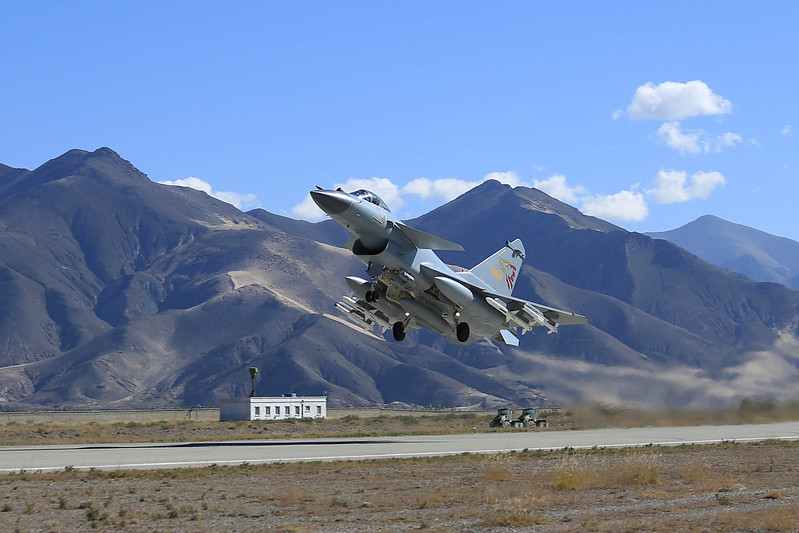
The J-10 fighter aircraft carries a maximum of 4,950 liters of fuel internally, comprising 3,180 liters in the wing tanks and 1770 liters in the fuselage tanks. A fixed refueling probe for in-flight refueling is installed halfway up the forward port side of the fuselage and just forward of the pilot. Aerial refueling of the J-10 is from a Xian H-6U tanker aircraft.
J-10 Weapon System:
The J-10 has 11 external hardpoints which includes three hardpoints under each wing, one on the centerline and a pair of hardpoints on each side of the fuselage.
The outer wing stations can carry air-to-air missiles which includes Chinese built PL-8, most advanced short-range PL-10 high off-boresight AAM, PL-12, and PL-15 long-range missile.
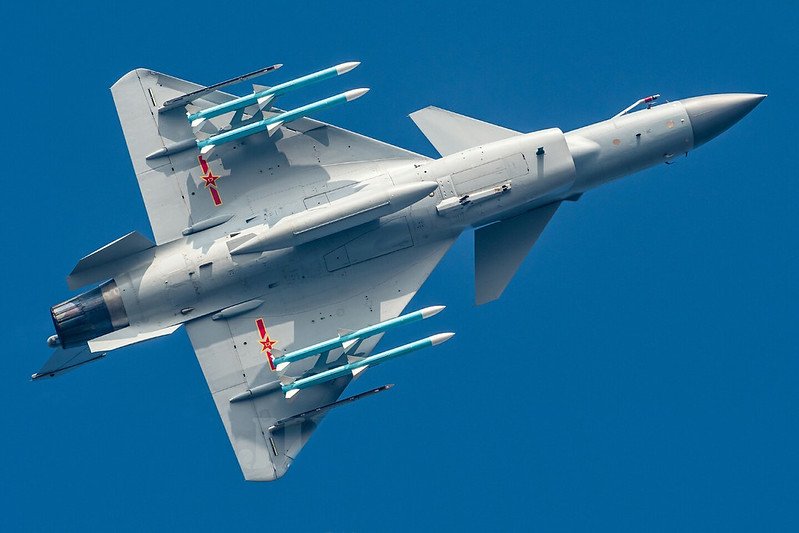
PL-10’s and PL-15’s are the most advanced and lethal air-to-air missiles that China has built in recent times. PL-10 is a short-range, fourth-generation high off-boresight air-to-air missile. It has a range of 20 km. The missile greatly enhances the no escape zone of the aircraft. While PL-15 is a long-range active radar-guided air-to-air missile. It has an active electronically scanned array radar seeker with a range of more than 145 km. The missile is 4m long and can move with a speed of Mach 4. It can be comparable with other advanced long-range air-to-air missiles in performance and outclass most of them due to its advanced features.
For ground attack, the J-10 can carry upto six 500 kg laser-guided bombs, free fall bombs, and pods with unguided 90mm rockets. Anti-ship missiles include YJ-8K or C-801K solid rocket powered missiles, C-802 land-attack and anti-ship turbojet-powered missiles, and YJ-9 anti-radiation missiles.
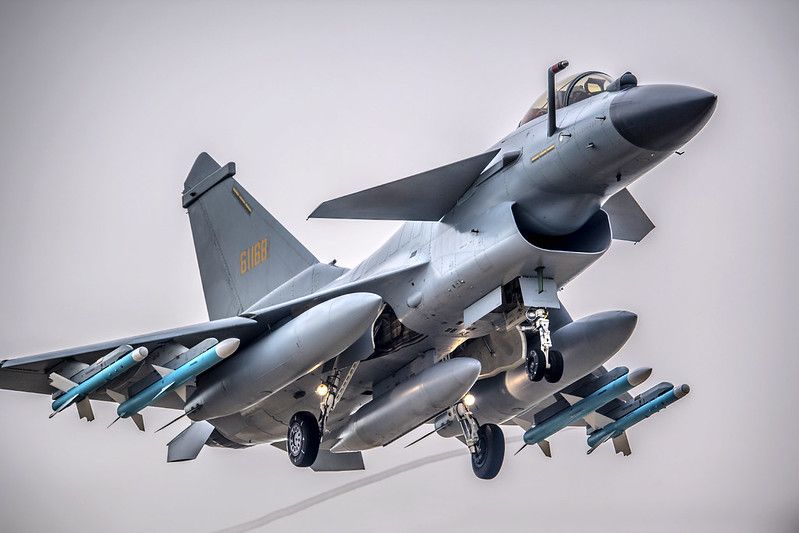
Additionally, the J-10 can also carry navigation and targeting pods and auxiliary fuel tanks for longer range.
The J-10 also has a 23mm cannon installed internally on the port side of the forward section of the fuselage.
J-10 Variants:
J-10A:
It is a single seat, multi-role early variant of the aircraft. Its export name is F-10A. According to some sources, the naval version of J-10A was also introduced which was designated as J-10AH.
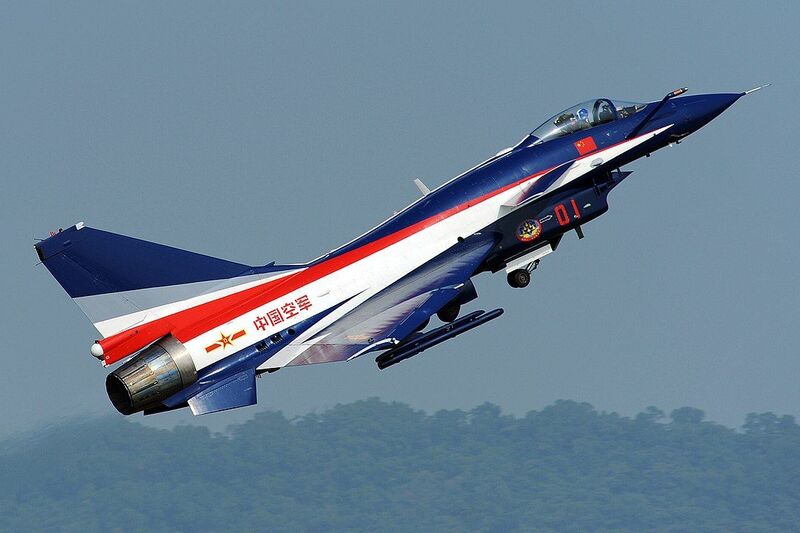
J-10S:
It is a twin-seat, trainer variant of the J-10A. The J-10S is a combat capable trainer aircraft. The naval version of the twin-seater J-10S was also introduced and named as J-10SH.
J-10B:
The J-10B is an upgraded advanced version of the J-10A aircraft. It is known as ‘Super-10’.
The J-10B features the next-generation electronic warfare (EW) suit, the new lighter and stealth composite radar absorbent material, a diverterless supersonic inlet (DSI), new generation avionics, modified vertical stabilizer and wings, a new electronic warning and countermeasures pod, and an infrared search and track (IRST & laser rangefinder) sensor. The J-10B has a modified nose cone for more advanced AESA radar.
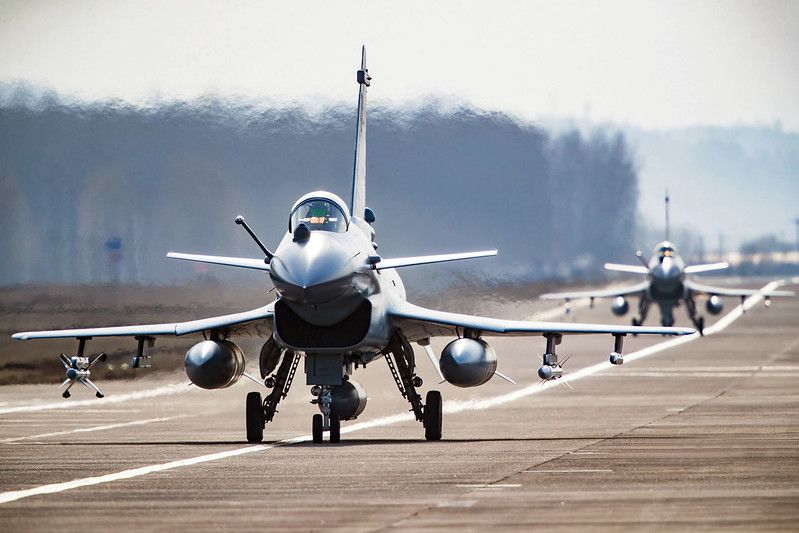
The J-10B thrust vectoring control (TVC) engine demonstrator, a prototype which was equipped with Chinese indigenous WS-10B engine, participated in the Zhuhai air show in 2018. The aircraft has super maneuverability characteristics, capable of performing cobra maneuvers.
J-10C:
It is the upgraded variant of J-10B. It is also known as FC-20. It has more advanced features. The J-10C equipped with the home-grown active electronically scanned array (AESA) radar and imaging infrared seeker (IIR).
The aircraft also equipped with the advanced PL-10 short-range air-to-air high off-boresight missile and the PL-15 long-range AAM with the first of its kind active electronically scanned array radar seeker with a range of more than 145 km.
The J-10CE is the export variant of the J-10C.
Chengdu J-10 Customers:
Pakistan is the only foreign customer and the operator of the Chinese J-10 fighter jet. Pakistan signed a $1.4 billion deal with China in 2009 to buy the 36 J-10B aircraft.
But according to Pakistani media reports and Pakistan’s former Interior Minister Sheikh Rasheed, the country will acquire a full squadron of 25 Chinese most advanced J-10CE fighter jets.

Pakistan first showed interest in the Chengdu J-10 back in 2006. According to the report from Military Watch Magazine, the acquisition of Chinese advanced 4++ generation J-10 by Pakistan is the first time in nearly 15 years that the country has commissioned a new fighter class.
Most probably Pakistan is eager to acquire the medium weight fighter to maintain the balance of power with India because India has recently acquired the most advanced Rafael fighter jets from France.
Analysis:
The J-10 has a good maintainability, high reliability, and strong survivability.
According to the Business Insider, to date no variant of the J-10 has been operationally tested in real combat like some of its 4th-generation peers such as an American F-16 or Russian Su-27. But the aircraft still matches the 4+ generation aircraft in terms of its capabilities, which is the reason why the Chinese leadership has assigned the J-10 the role of the backbone of the air force.
The Chengdu J-10 role as China’s principal multi-role aircraft will ensure that it remains in use by the PLAAF for the foreseeable future.


